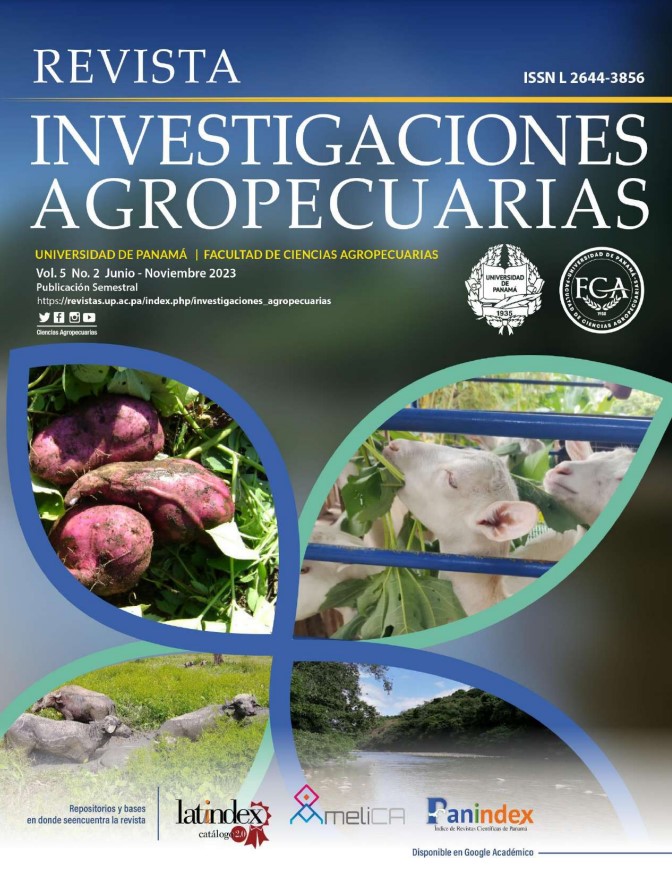

Copyright (c) 2023 Revista Investigaciones Agropecuarias

This work is licensed under a Creative Commons Attribution-NonCommercial-ShareAlike 4.0 International License.
The evolution of body growth and symmetric dimensions in the Buffalypso water buffalo (Bubalus bubalis) were evaluated by sex across the first 36 months under a feeding model based on Tanner (Brachiaria arrecta) at annual THI 77.91 ± 1.24 °% in 146 buffaloes in Bocas del Toro Province, Republic of Panama. Body weight and symmetric indexes were different in the first 36 months (P<.001). Body weight in males (61) and females (85) were at 12 months (207.8 and 176 kg, p<.001), 24 (306.6 and 248.1 kg, p<.001) and at 36 months (373.77 and 368.2 kg, p>.05); resulting males heavier than females in 18.04, 23.58 and 1.48%. Those values represented 85 to 89% of the Buffalypso weight pattern. The sectorial body weight gains were highest in the first eight months (males 0.554 kg/day and females 0.530 kg/day, P>.05), 12 to 24 months (males 0.258 and females 0.146 kg/day, P<.01), 24.1 to 30 months (males 0.419 and females 0.468 kg/day, P>.05); and from 30.1 to 36 months (males 0.160 and 0.261 kg/day, P<.01). Body dimensional parameters were positively correlated to body weight and age in both sexes from 0.59 to 0.97 (P<.001). The evolution of body growth according to body weight showed a sigmoidal polinomic shape, but it was below the Buffalypso growth pattern under the feeding model based on Tanner, which indicated the needs for adjustments in nutrition, feeding, health and management to increase the growth rate and productivity of Buffalypso water buffalo in Panamá.